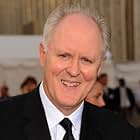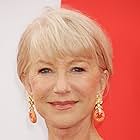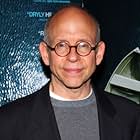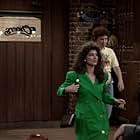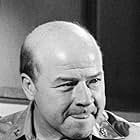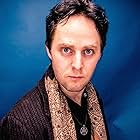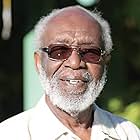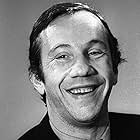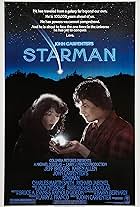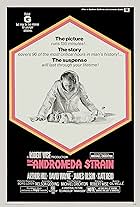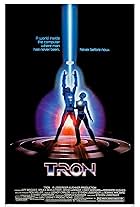Una spedizione congiunta tra gli Stati Uniti di America e l'Unione Sovietica viene inviata su Giove per apprendere cosa è successo alla Discovery e il super computer H.A.L.Una spedizione congiunta tra gli Stati Uniti di America e l'Unione Sovietica viene inviata su Giove per apprendere cosa è successo alla Discovery e il super computer H.A.L.Una spedizione congiunta tra gli Stati Uniti di America e l'Unione Sovietica viene inviata su Giove per apprendere cosa è successo alla Discovery e il super computer H.A.L.
- Candidato a 5 Oscar
- 1 vittoria e 8 candidature totali
- HAL 9000
- (voce)
- Caroline Floyd
- (as Madolyn Smith)
- Dr. Vladimir Rudenko
- (as Savely Kramarov)
Trama
Lo sapevi?
- QuizStanley Kubrick notoriously had all models and sets from 2001: Odissea nello spazio (1968) destroyed to prevent their reuse (which was common at the time). The model and interior of the spaceship Discovery had to be constructed by painstakingly scrutinizing blown-up frames from the original movie. The reconstructed ship was not a complete copy: the corridors are just a bit wider and lit with a more natural blue/white tone compared to its '2001' counterpart.
- BlooperNo pods should be in the pod bay in 2010. 2001: Odissea nello spazio (1968) showed 3 pods. All were lost. The first was lost with Poole's body. The second was lost when Bowman blew the exploding bolts to enter the airlock. The third transported Bowman into the worm hole/monolith. When the crew enters the pod bay in 2010, one pod is is still sitting in it's storage area. (Although ignored in the movie, this is explained in the book (section 4, chapter 24). Dave Bowman is supposed to have retrieved pod #3 on remote while preparing his departure.) It is entirely possible that Bowen could have remotely piloted the pod back to the Discovery.
- Citazioni
Dr. Vasili Orlov: What was that all about?
Chandra: I've erased all of HAL's memory from the moment the trouble started.
Dr. Vasili Orlov: The 9000 series uses holographic memories, so chronological erasures would not work.
Chandra: I made a tapeworm.
Walter Curnow: You made a what?
Chandra: It's a program that's fed into a system that will hunt down and destroy any desired memories.
Dr. Heywood Floyd: Wait... do you know why HAL did what he did?
Chandra: Yes. It wasn't his fault.
Dr. Heywood Floyd: Whose fault was it?
Chandra: Yours.
Dr. Heywood Floyd: Mine?
Chandra: Yours. In going through HAL's memory banks, I discovered his original orders. You wrote those orders. Discovery's mission to Jupiter was already in the advanced planning stages when the first small Monolith was found on the Moon, and sent its signal towards Jupiter. By direct presidential order, the existence of that Monolith was kept secret.
Dr. Heywood Floyd: So?
Chandra: So, as the function of the command crew - Bowman and Poole - was to get Discovery to its destination, it was decided that they should not be informed. The investigative team was trained separately, and placed in hibernation before the voyage began. Since HAL was capable of operating Discovery without human assistance, it was decided that he should be programmed to complete the mission autonomously in the event the crew was incapacitated or killed. He was given full knowledge of the true objective... and instructed not to reveal anything to Bowman or Poole. He was instructed to lie.
Dr. Heywood Floyd: What are you talking about? I didn't authorize anyone to tell HAL about the Monolith!
Chandra: Directive is NSC 342/23, top secret, January 30, 2001.
Dr. Heywood Floyd: NSC... National Security Council, the White House.
Chandra: I don't care who it is. The situation was in conflict with the basic purpose of HAL's design: The accurate processing of information without distortion or concealment. He became trapped. The technical term is an H. Moebius loop, which can happen in advanced computers with autonomous goal-seeking programs.
Walter Curnow: The goddamn White House.
Dr. Heywood Floyd: I don't believe it.
Chandra: HAL was told to lie... by people who find it easy to lie. HAL doesn't know how, so he couldn't function. He became paranoid.
Dr. Heywood Floyd: Those sons of bitches. I didn't know. I didn't know!
- Colonne sonoreAlso Sprach Zarathustra!
By Richard Strauss
Now:
1. To everyone saying this is a weak film because it doesn't match the depth, mystery, and style of Kubrick's 2001: You guys need to open your minds a bit! It's ridiculously unfair to measure this sequel, or any film, against 2001. It is, frankly, impossible for ANYONE to produce a film that matches Kubrick's style unless that someone *IS* Kubrick himself! 2010 was not produced to COMPETE with 2001 at all, the director stated that he never would have produced this film without Kubrick's and Clarke's BLESSING. I'm sure the director deliberately avoided copying any of the style of 2001 at the risk of failing miserably and upsetting his own idol. Kubrick told the director to make this movie his own, thus the director did! If you go cynically comparing all sci-fi films to rare masterpieces you will only end up ruining your own chance of enjoying them for their own merits. It's like saying all music is of dubious value because it wasn't composed by Beethoven! You're only hurting and embarrassing yourself.
2. A number of reviewers felt that the monitors on the ships (actual CRTs built into the sets) look cheesy due to their pixellated graphics and curved faces. Well, you guys are assuming that Kubrick's film has flat panels because of some scientific rationale about the future. Did you think that maybe Kubrick didn't use CRTs on his sets was because they did not have color CRTs available in 1968 that were small or cheap enough to build into his sets? All his screens were flat because they used slide projectors to flash static images against the back of semi-transparent screens. Most images were hand drawn to resemble possible computer generated images. The original 2001 scene of the videophone was created by projecting a reel of film against the back of a screen. In 1984, the computer industry was just starting to explode, and color-CRT displays as small as 12" were readily available! When those set designers sat down to think about what the ship of the future would look like, they rationalized that they would be full of CRT displays in 2010, which was only 27 years in the ACTUAL future! How could they know we'd have low cost high resolution LCD flat-screens after only 17 years? You limit your enjoyment by over-intellectualizing everything with a cynical attitude. Of course the graphics were blocky! They were rendered by REAL computers, not hand drawn by artists. I'm sure in 1984 they felt that was a great idea and a nod towards future possibilities!
3. Many people criticize the heavy amount of dialog in 2010 contrasted to the lack of dialog in 2001. Again, we're falling back on the "not Kubrick" style issue. Regardless, you do realize that the BOOK for 2001 was FULL of dialog, right? You DID realize that 2001 is not JUST a film, it has a companion novel several hundred pages long? Since it's a story developed by TWO people, and not just Kubrick, perhaps the lack of dialog is only one director's idea at visualizing the novel and not integral to the STORY itself?
4. Some have heavily criticized the scientific components of 2010, stating that Kubrick had NASA consultants available when he made his film, and that 2010 is weak in this area... Well, I'm wondering why you assume that it wasn't the same case for 2010? Do you have some kind of special insider info about the making of 2010? Because, I believe that there are numerous production notes readily available clearly stating that the director of 2010 was careful in this regard and had many scientific consultants involved in the production of 2010. There is a whole book containing copies of emails between the director of 2010 and Clarke! I remember reading that even Carl Sagan had input into 2010! Oh yeah, lets not forget that Clarke makes a brief cameo in the film, and that both Clarke and Kubrick appear on a magazine cover in the film? If that's not an official endorsement of the film's authenticity and canon, then I am sorely mistaken.
I'm just getting tired of these seemingly angry, cynical, ego-maniacally tedious reviewers bashing the merits of decent films. These people often assume they're brilliant enough to understand what Kubrik (or any filmmaker) was thinking. Dude, you're not Kubrick, you're not a genius artist, you don't even make films! Cynical attitudes are self-destructive, intelligent people are by nature open-minded, and analyze things on their own merits and faults instead of holding everything against rare artistic standards from previous works. The merits or faults of any work are entirely subjective. Many people rate 2001 as one of the greatest movies ever only because all the smart-sounding people do. How many call 2001 a "masterpeice" because they truly, emotionally, and intellectually appreciate the work itself, or simply because it's Kubrick's? How many of you can even honestly answer that question without lying to yourselves?
For the rest of you... if you are open-minded, and consider 2010 for what it is: a DIFFERENT director's take on telling a story from a DIFFERENT book, produced in a DIFFERENT era, then you will enjoy this movie, appreciating that it stands on it's own as one of the top science-fiction films made. And I bet you really enjoy yourselves when you watch movies too, even if they have some flaws.
Good for you!
I più visti
Dettagli
- Data di uscita
- Paese di origine
- Sito ufficiale
- Lingue
- Celebre anche come
- 2010: The Year We Make Contact
- Luoghi delle riprese
- Azienda produttrice
- Vedi altri crediti dell’azienda su IMDbPro
Botteghino
- Budget
- 28.000.000 USD (previsto)
- Lordo Stati Uniti e Canada
- 40.400.657 USD
- Fine settimana di apertura Stati Uniti e Canada
- 7.393.361 USD
- 9 dic 1984
- Lordo in tutto il mondo
- 40.400.657 USD
- Tempo di esecuzione1 ora 56 minuti
- Colore
- Proporzioni
- 2.35 : 1
Contribuisci a questa pagina













